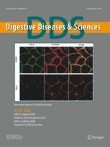Nanoemulsions (NEs), built of components generally recognized as safe, can be considered as "green" nanocarriers that mimic closely naturally occurring lipoproteins and intracellular lipid droplets. Here, dye‐loaded fluorescent NEs are described, including their formulation, dye design, stability assessment, and emerging biological applications, which include fluorescence imaging and single‐particle tracking at the cellular and animal levels, tumor targeting, and photodynamic therapy.
Abstract
Lipid nanoemulsions (NEs), owing to their controllable size (20 to 500 nm), stability and biocompatibility, are now frequently used in various fields, such as food, cosmetics, pharmaceuticals, drug delivery, and even as nanoreactors for chemical synthesis. Moreover, being composed of components generally recognized as safe (GRAS), they can be considered as "green" nanoparticles that mimic closely lipoproteins and intracellular lipid droplets. Therefore, they attracted attention as carriers of drugs and fluorescent dyes for both bioimaging and studying the fate of nanoemulsions in cells and small animals. In this review, the composition of dye‐loaded NEs, methods for their preparation, and emerging biological applications are described. The design of bright fluorescent NEs with high dye loading and minimal aggregation‐caused quenching (ACQ) is focused on. Common issues including dye leakage and NEs stability are discussed, highlighting advanced techniques for their cha racterization, such as Förster resonance energy transfer (FRET) and fluorescence correlation spectroscopy (FCS). Attempts to functionalize NEs surface are also discussed. Thereafter, biological applications for bioimaging and single‐particle tracking in cells and small animals as well as biomedical applications for photodynamic therapy are described. Finally, challenges and future perspectives of fluorescent NEs are discussed.








